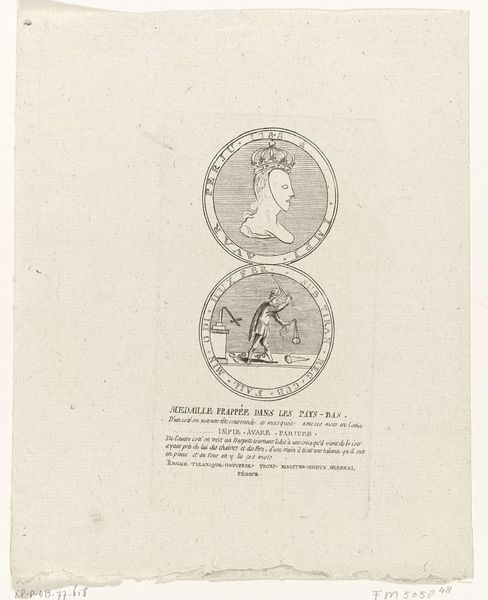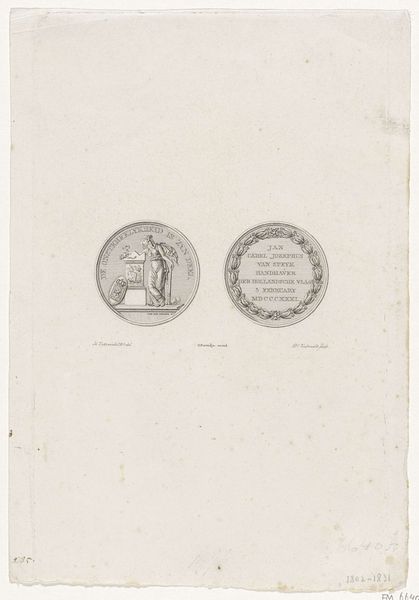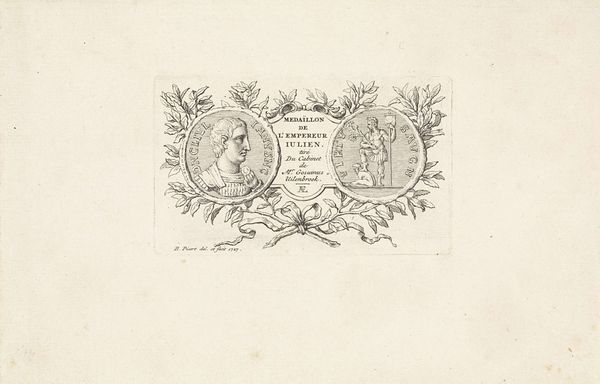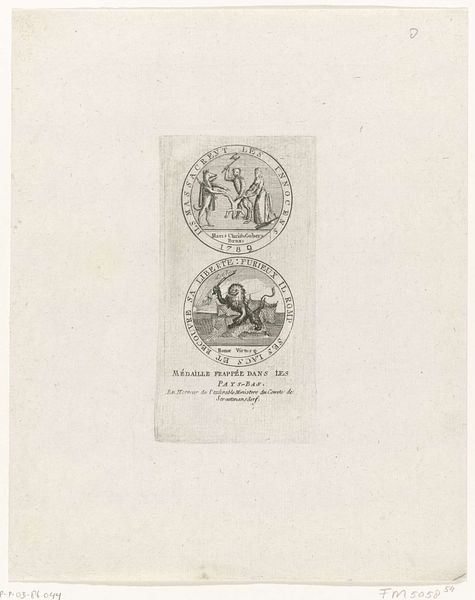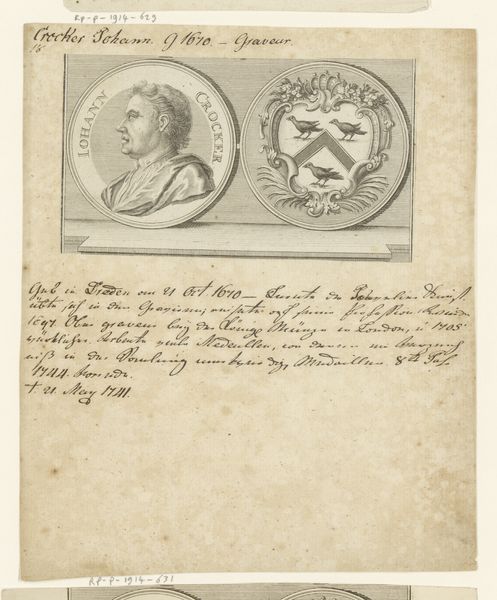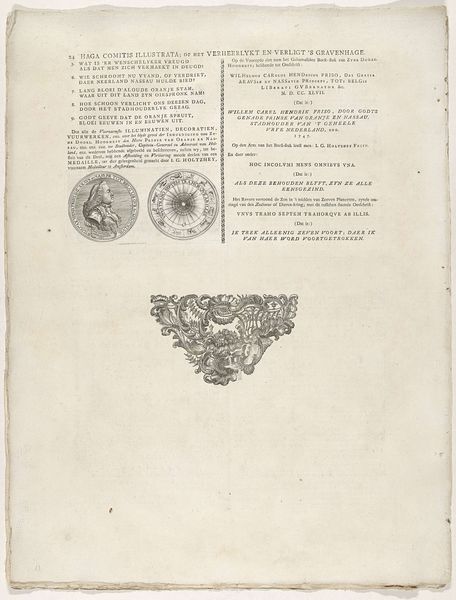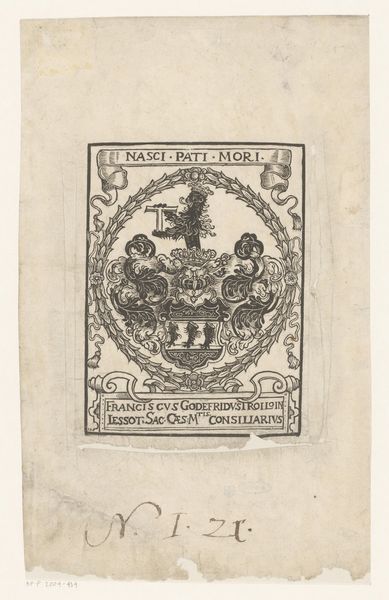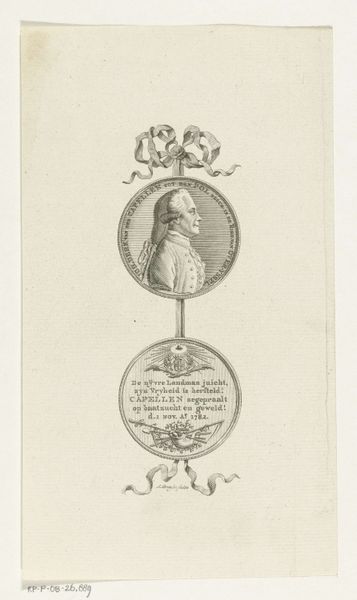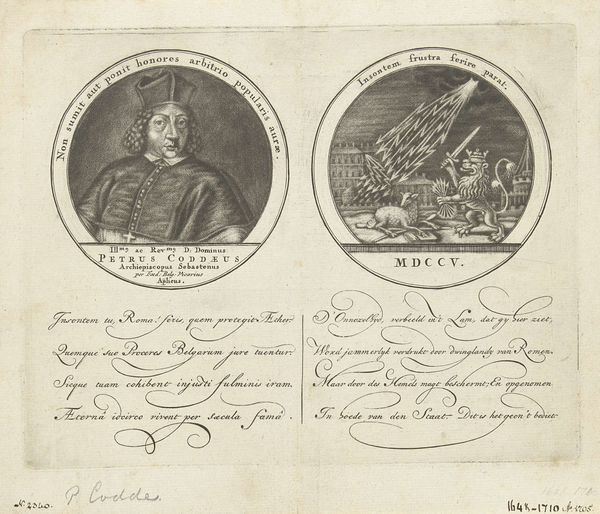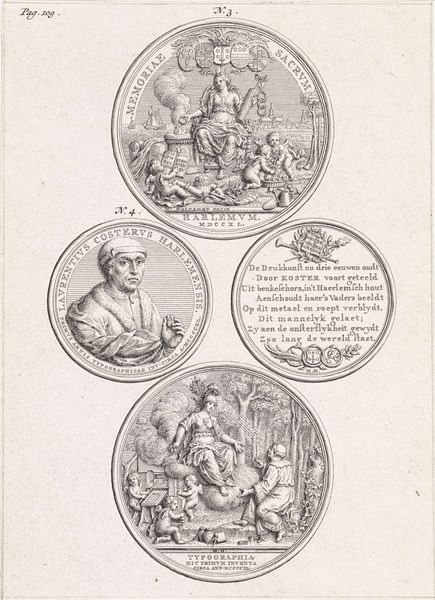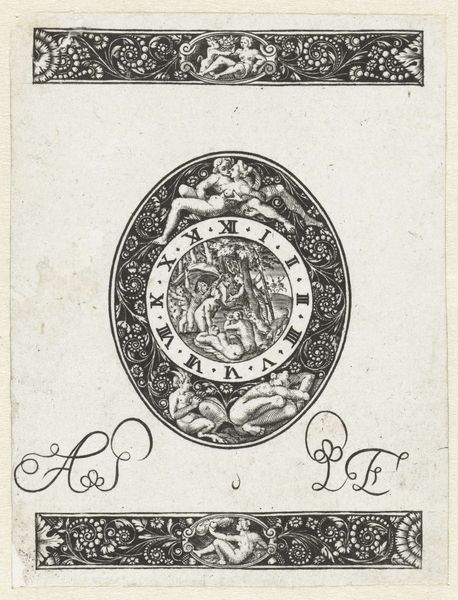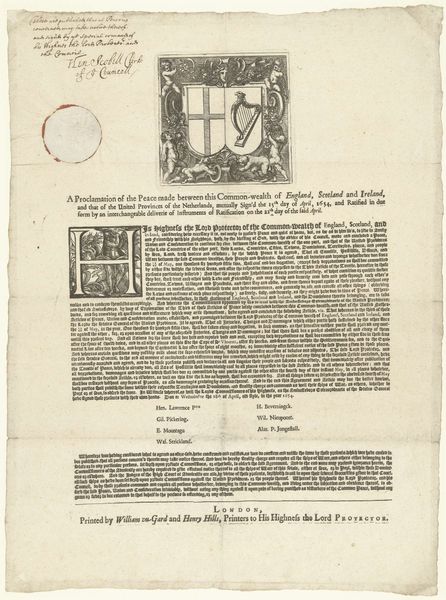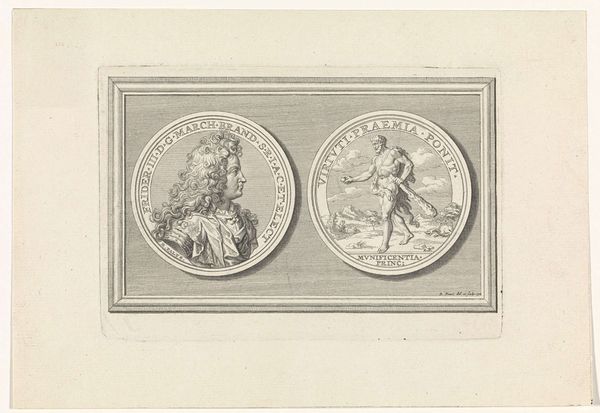
Voor- en keerzijde van een penning op de dood van de gebroeders De Witt, 1672 1672 - 1699
0:00
0:00
anonymous
Rijksmuseum
print, etching, engraving
#
portrait
#
baroque
# print
#
etching
#
old engraving style
#
pen-ink sketch
#
pen work
#
engraving
Dimensions: height 247 mm, width 200 mm
Copyright: Rijks Museum: Open Domain
Editor: Here we have "Voor- en keerzijde van een penning op de dood van de gebroeders De Witt, 1672", or "Obverse and reverse of a medal on the death of the De Witt brothers, 1672" by an anonymous artist, etched and engraved. It’s a somber piece, depicting what appears to be the brothers and, on the reverse, a rather chaotic scene. What do you see in this work? Curator: This print is more than just a historical record; it's a potent piece of propaganda reflecting the brutal political climate in the Dutch Republic during the Rampjaar, or "Disaster Year" of 1672. The De Witt brothers were lynched by a mob, and this print captures the intense emotions surrounding their deaths. Editor: Propaganda, really? It looks rather…formal. Curator: Exactly, but consider the context. The idealized portraits on one side serve to legitimize their leadership and sacrifice. The reverse, depicting a wild beast, speaks to the perceived barbarity of their killers and the political instability of the time. The artist uses established visual tropes to shape public opinion and to depict it under barbaric instability. Think about who this image was designed for and how that might influence the artistic choices. Do you see any other visual cues, relating to other periods, that might reveal meaning? Editor: I see that both images have medallions with inscribed text, as might be seen in Roman or Renaissance works. Are they meant to have parallels in some way? Curator: Precisely! The imagery recalls earlier emblems of power and civilization now undone by the violence of contemporary events. This juxtaposition highlights the fragility of social order. This is not merely a portrayal of death, but a commentary on justice, power, and the collective memory of a nation in turmoil. What do you make of it now? Editor: I see it differently now! It's a visual argument, a way to sway emotions and cement a certain narrative around a horrific event. It speaks volumes about how art can be a powerful tool in times of crisis. Curator: Indeed, understanding the socio-political context unveils the work’s deeper meaning and purpose.
Comments
No comments
Be the first to comment and join the conversation on the ultimate creative platform.
